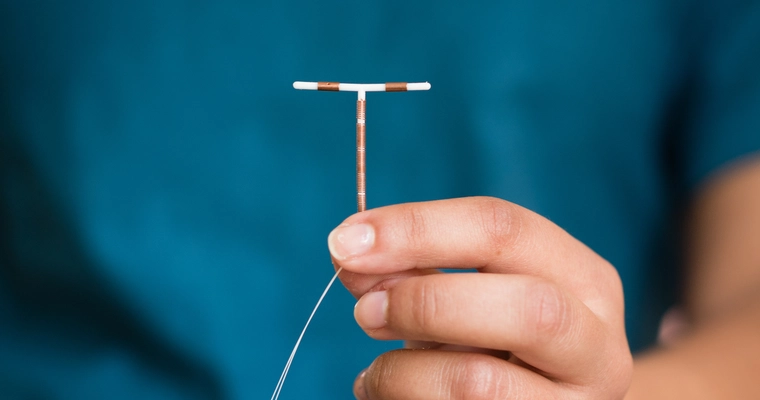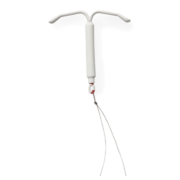Mirena & LILETTA & Kyleena & Skyla & Paragard: A guide to figuring out which IUD is right for you
Or the members of an Icelandic girl band

The IUD. The subject of so many love songs (okay, maybe not real ones, but ones we made up!), and yet it seems so humble. Just a little piece of plastic, but could it be the answer to your birth control prayers?
First, the basics: it’s a T-shaped device that a provider places in your uterus to prevent pregnancy. There are five IUDs available in the U.S. All five of them are very safe and very effective at preventing pregnancy. None of them protect against STIs, so use condoms or internal condoms for that. IUDs are safe for the vast majority of people to get, but there are some situations in which you shouldn’t get an IUD, like if you have an active pelvic infection or STI, if you’re already pregnant, or have certain types of cancer.
There are some differences among the five IUDs. The biggest is that the copper IUD (Paragard) is non-hormonal, while the other four (Mirena, LILETTA, Kyleena, and Skyla) contain a hormone called levonorgestrel, which is a type of progestin. While they all work very well to prevent pregnancy, the non-hormonal IUD can have different benefits and side effects than the hormonal IUDs, and the four hormonal IUDs have some differences among them as well.
Which IUD is best for you depends on what’s most important to you.
If effectiveness is most important to you…
First of all, they’re all very effective, so you could choose any of them and be set. IUDs in general are one of the most effective ways to prevent pregnancy, along with the implant and having your tubes tied.
The most effective IUDs though are Mirena and LILETTA. These two IUDs have the highest dose of hormones of the four hormonal IUDs, though you still get a lower amount of hormones circulating in your body with them than you do with the pill. Kyleena has a lower dose of hormones than Mirena and LILETTA, and Skyla has the lowest. As the dosage decreases, the effectiveness decreases a little, but they are all still super effective at preventing pregnancy.
If not having hormones (or having as little as possible) is most important to you…
If you don’t want hormones at all, go for Paragard! If you’re okay with hormones but want as low a dose as possible, go for Skyla.
If being able to get pregnant in the future is most important to you…
You can get any of the five IUDs! Great news: when you get an IUD removed, your ability to get pregnant immediately goes back to whatever is normal for you.
If you don’t have insurance and/or cost is most important…
LILETTA may be the one for you. LILETTA is actually made by a non-profit pharmaceutical company called Medicines360. They offer discounts for LILETTA at clinics that work with people who have lower incomes, so if you don’t have insurance or you have insurance that doesn’t cover the things you need, LILETTA is probably your best bet. It’s identical to Mirena in terms of size and hormone level.
If you want to use an IUD for emergency contraception (EC)…
Paragard is the way to go. It’s actually the most effective form of EC, and it can be used for up to 5 days after having unprotected sex, though some data suggest that it’s effective when used even later than that. Hormonal IUDs are currently being studied for use as EC, but we can’t recommend them yet. However, you can get a hormonal IUD at the same time as taking EC pills.
If you want something that you can get removed whenever you want…
You can get any of the five IUDs! How long you use the IUD for is totally up to you. Just because you can keep using it for years doesn’t AT ALL mean that you have to. If you want it removed, your provider should remove it, end of story.
If not having to replace it for a long time is most important…
All five IUDs are FDA-approved for use for up to at least three years. Paragard can be used for up to ten years; Mirena and LILETTA can be used for up to eight years; Kyleena can be used for up to five years; and Skyla can be used for up to three years. In practice, Paragard has been found to be effective for 12 to 20 years.
If having lighter periods or no periods at all is most important…
Go for one of the four hormonal IUDs. They can cause your period to get lighter and even stop completely, whereas the copper IUD (Paragard) may cause heavier, longer, or more uncomfortable periods, especially for the first few months.
Keep in mind that the majority of people with a hormonal IUD do still ovulate, even if they’re not getting a period, which means you could still get symptoms like mood swings. So if not wanting a period is really about not wanting PMS, there’s no guarantee that the hormonal IUD can help with that.
If you want to keep getting your period…
If you feel like not getting your period anymore would make you too anxious that you’re pregnant, Paragard (the non-hormonal IUD) might be your best bet.
If you can’t stand spotting or irregular bleeding temporarily…
Paragard might be the one for you, since the hormonal IUDs tend to cause irregular, light bleeding and spotting for the first few months. However, keep in mind that this usually gets better and you may eventually stop getting your period altogether, so it may be worth putting up with some spotting for a few months.
If you can’t stand heavier or more painful periods temporarily…
One of the hormonal IUDs may be better for you. Paragard may cause heavier, longer, and more uncomfortable periods. This is especially true for the first few periods after getting the Paragard, but it may continue the whole time you have it.
If getting the smallest IUD possible is most important…
Skyla and Kyleena are the smallest IUDs (they’re the same size). But keep in mind that most people (including teens and people who have never given birth) do just fine getting an IUD placed and don’t need to get a smaller one. So if there are other factors that are also important to you, size may not need to be the top priority.
If avoiding weight gain is most important…
You may want to go with Paragard. Because it’s non-hormonal, it doesn’t affect your weight. However, the average weight change for people who have had one of the hormonal IUDs for a year is only 2.2 pounds—and hey, we’ve eaten cheeseburgers that weigh more than that.
If you want something you can get immediately after miscarriage, birth, or abortion…
You can get any of the five IUDs!
If avoiding infection is most important to you…
You can get any of the five IUDs! They all have a very low risk of causing pelvic infections. Recent research suggests that it’s actually the process of having the IUD placed (rather than the IUD itself) that slightly increases infection risk, and this risk only increases in the short term. In fact, hormonal IUDs may actually protect you from pelvic inflammatory disease (PID) by making your cervical mucus thicker and harder for bacteria to get through. However, if you have an undiagnosed STI when you get an IUD placed, you are at a higher risk of PID, so your provider may recommend that you get tested for STIs when getting an IUD.
If getting an IUD that starts working immediately is most important…
The Paragard may be the one for you. It’s effective immediately. In contrast, with any of the hormonal IUDs, you need to use a backup method of birth control (like condoms or internal condoms) for the first 7 days after getting your IUD placed. The only exception to this rule is if you get a hormonal IUD placed within a week of the first day of your period in which case you don’t need to use a backup method.
If you can’t take anything with estrogen in it…
You can get any of the five IUDs! None of them contain estrogen.
If you want to reduce your endometrial cancer and/or cervical cancer risk…
All IUDs are linked to lower risk of endometrial cancer. Paragard is the only IUD that’s also linked to a lower risk of cervical cancer.
How do you feel about this article?

Heat up your weekends with our best sex tips and so much more.
